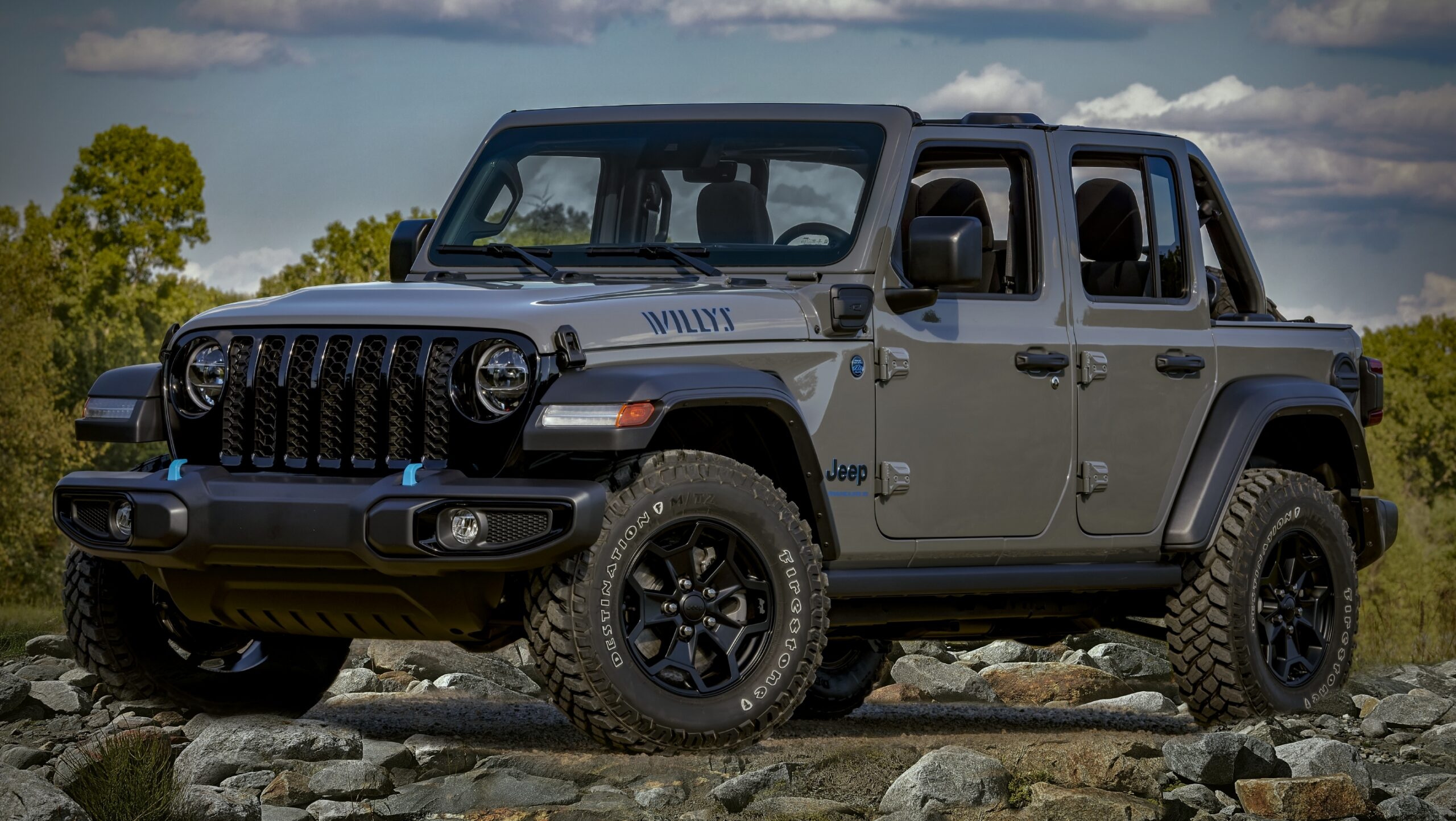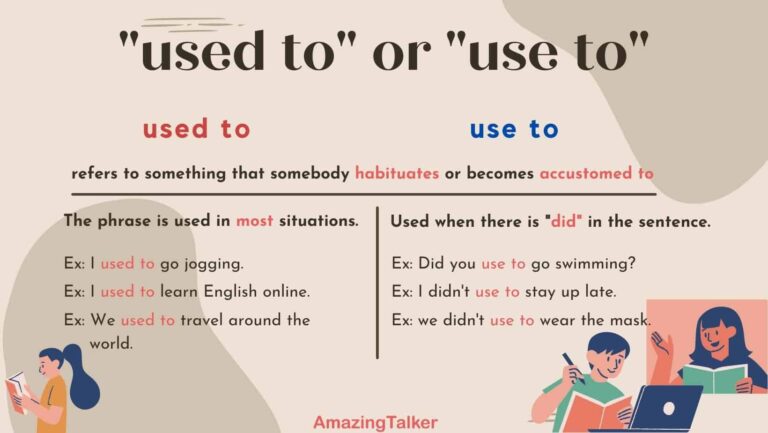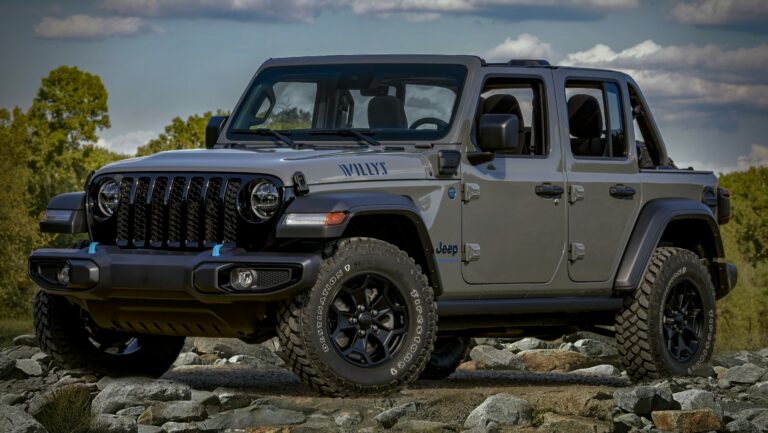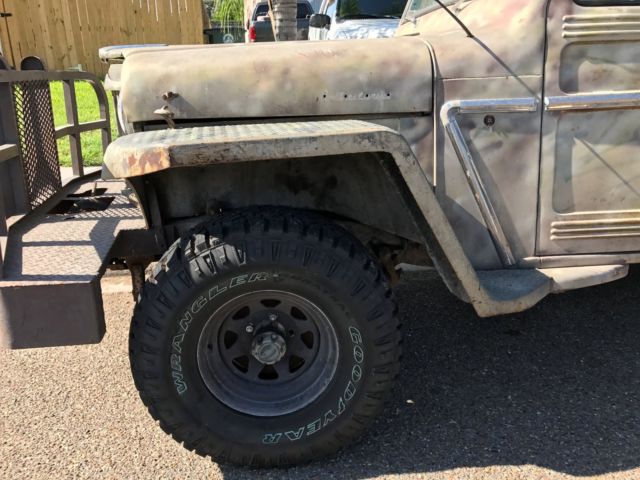Jeep Lockers For Sale: Unlocking Your Off-Road Potential
Jeep Lockers For Sale: Unlocking Your Off-Road Potential jeeps.truckstrend.com
The roar of an engine, the crunch of tires over rocks, the thrill of conquering an impossible trail – this is the essence of Jeep off-roading. But even the most capable Jeep can find itself bogged down, one wheel spinning helplessly in the air while the others remain stubbornly still. This frustrating scenario is precisely why the phrase "Jeep lockers for sale" resonates so deeply with enthusiasts. Lockers are not just an upgrade; they are a fundamental transformation, turning your capable 4×4 into an unstoppable force, ensuring that all available power is delivered where it’s needed most: to the wheels that have traction. If you’ve ever dreamt of pushing your Jeep’s limits, navigating treacherous terrain with confidence, and leaving lesser vehicles in your dust, then understanding and acquiring the right lockers is your next crucial step. This comprehensive guide will delve into everything you need to know about Jeep lockers, from their function and types to purchasing considerations and installation insights.
Understanding Jeep Lockers – The Traction Revolution
Jeep Lockers For Sale: Unlocking Your Off-Road Potential
At the heart of every vehicle lies a differential, a clever mechanical device that allows wheels on the same axle to spin at different speeds, crucial for smooth turns on pavement. While excellent for street driving, this design becomes a significant liability off-road. When one wheel loses traction (e.g., lifts off the ground, slips in mud), the open differential sends all power to that spinning wheel, leaving the wheel with traction powerless. This is where lockers come in.
What are Lockers?
Simply put, a locker is a differential replacement or modification that, when engaged, forces both wheels on an axle to spin at the same speed, regardless of traction. This "locks" the axle, ensuring that if one wheel loses traction, the other wheel still receives power and can pull the vehicle forward. It’s the ultimate solution for maintaining momentum and control in low-traction environments.
Why Your Jeep Needs Lockers:
- Conquering Obstacles: Whether it’s steep rock climbs, deep ruts, or slippery mud holes, lockers ensure consistent power delivery to both wheels, allowing you to crawl over or through obstacles that would otherwise stop you cold.
- Eliminating Wheel Spin: No more frustrating moments where one wheel spins wildly while the others do nothing. Lockers distribute torque evenly, maximizing your grip.
- Enhanced Control and Safety: By providing predictable traction, lockers give you more control over your vehicle, reducing the risk of getting stuck or sliding uncontrollably in challenging conditions.
- Maximizing Articulation: When your Jeep articulates, one or more wheels might lift off the ground. With an open differential, this means instant loss of power. Lockers negate this issue, keeping you moving.
- Unlocking True 4×4 Potential: While your Jeep is already 4×4, without lockers, it essentially operates as a 2-wheel-drive system (one front wheel, one rear wheel) in situations where one wheel on each axle loses traction. Lockers transform it into a true 4-wheel-drive powerhouse.

Types of Jeep Lockers – Choosing Your Weapon
When exploring Jeep lockers for sale, you’ll primarily encounter two main categories, each with its own characteristics, benefits, and drawbacks. Understanding these differences is crucial for making an informed decision that aligns with your driving style and budget.
1. Automatic Lockers (Lunchbox Lockers / Detroit Lockers)
Automatic lockers are mechanical devices that engage automatically when torque is applied, effectively locking the axle. They disengage when the vehicle is turning or when there’s a significant difference in wheel speed, allowing for some differentiation.
- How They Work: These units use internal gears and springs to "ratchet" and lock. When you apply power, they lock. When you turn, the outer wheel spins faster, causing the locker to momentarily unlock and allow differentiation.
- Pros:
- Cost-Effective: Generally the most affordable option.
- Simple Installation: "Lunchbox" style lockers often drop into your existing carrier, requiring less complex installation than full carrier replacements.
- Robust and Reliable: Fewer moving parts mean less to break.
- Always Ready: No buttons or switches to engage; they just work.
- Cons:
- On-Road Manners: Can be noticeable on pavement, especially during turns. You might hear clicking, clunking, or feel a "push" in the steering, particularly in the front axle. This can lead to increased tire wear.
- Learning Curve: Requires adjusting driving style on pavement, especially in wet or icy conditions, as they can cause unexpected slips if not handled properly.
- Predictability: While generally reliable, their automatic engagement isn’t always ideal for precision maneuvering on delicate terrain.
2. Selectable Lockers (Air Lockers / Electric Lockers)
Selectable lockers offer the best of both worlds: an open differential for excellent on-road manners and a fully locked differential at the flip of a switch for maximum off-road traction.
- How They Work:
- Air Lockers (e.g., ARB Air Locker): These use an onboard air compressor to actuate a locking mechanism within the differential, engaging or disengaging the locker.
- Electric Lockers (e.g., Eaton E-Locker, OX Locker): These use an electric motor or solenoid to engage the locking mechanism.
- Pros:
- On-Road Drivability: They function as open differentials when disengaged, providing perfectly normal street performance and tire wear.
- Ultimate Control: You decide precisely when and where to engage the locker, allowing for precise maneuvering and avoiding potential on-road issues.
- Maximum Off-Road Capability: When engaged, they provide 100% lock-up, delivering unparalleled traction.
- Cons:
- Higher Cost: Significantly more expensive than automatic lockers, especially when factoring in the cost of a compressor (for air lockers) or wiring.
- More Complex Installation: Requires running air lines or electrical wiring, and often involves a full carrier replacement, necessitating professional gear setup.
- Potential for Failure: Air lines can leak, electrical connections can fail, though modern systems are very reliable.
Limited Slip Differentials (LSDs) vs. Lockers
While often discussed in the same breath, LSDs are distinct from lockers. An LSD uses clutches or gears to bias torque to the wheel with more traction, but it never fully locks the axle. They are excellent for improving traction in everyday driving and light off-roading, but they cannot match the brute force and 100% lock-up capability of a true locker for extreme conditions. If serious rock crawling or mudding is your goal, lockers are the superior choice.
Key Considerations When Buying Jeep Lockers For Sale
The "Jeep lockers for sale" market is vast. Before you commit, consider these critical factors to ensure you choose the right locker for your Jeep and your specific needs.
- Axle Compatibility: This is paramount. Jeeps come with various axle types (e.g., Dana 30, Dana 35, Dana 44, Dana 60, Chrysler 8.25, Ford 8.8 swaps). You MUST know your front and rear axle types, as well as the spline count of your axle shafts, to ensure the locker fits correctly. An incorrect fit will lead to costly returns or, worse, damage.
- Tire Size and Driving Style: Larger tires put more stress on drivetrain components. If you’re running significantly oversized tires (e.g., 35-inch+), consider upgrading your axle shafts in conjunction with lockers to prevent breakage. Your primary driving style (mild trails vs. aggressive rock crawling) will also influence whether an automatic or selectable locker is more suitable.
- Budget: Lockers range from a few hundred dollars for a simple lunchbox locker to well over a thousand for a premium selectable unit, not including installation. Factor in both the unit cost and potential installation fees.
- Installation Complexity: Installing a full carrier locker (both automatic and selectable) requires specialized tools and expertise in setting gear backlash and pinion depth. This is a precision job. Incorrect installation can lead to gear whine, premature wear, and catastrophic failure. Unless you have significant experience with differential setup, professional installation is highly recommended.
- On-Road Driving Habits: If your Jeep is a daily driver, the on-road characteristics of automatic lockers might be a deal-breaker. The "clunking" and unpredictable steering can be annoying or even unsafe in certain conditions. Selectable lockers offer a seamless on-road experience.
- Brand Reputation and Warranty: Stick with reputable brands known for quality and reliability (e.g., ARB, Eaton, Yukon Gear & Axle, OX Off-Road, Spartan, Lock-Right). Check their warranty policies.
The Installation Journey – DIY or Pro?
Installing a locker is not a simple bolt-on operation. It involves disassembling your differential, removing the carrier, installing the new locker, and critically, re-setting the gear setup (backlash, pinion depth, carrier bearing preload).
DIY Considerations:
If you’re an experienced mechanic with the right tools (dial indicator, bearing puller, press, torque wrenches, setup bearings, case spreader for some axles), it’s possible. However, the margin for error is extremely small. An improperly set differential will fail prematurely and loudly.
Professional Installation:
For most Jeep owners, professional installation by a reputable off-road shop or drivetrain specialist is the wisest choice. They have the experience, specialized tools, and expertise to ensure your locker is installed correctly, providing years of trouble-free performance. While it adds to the overall cost, it’s an investment in the longevity and reliability of your drivetrain. Expect installation costs to range from $400-$800 per axle, not including parts.
Where to Find Jeep Lockers For Sale – Your Purchasing Options
Finding "Jeep lockers for sale" is easier than ever, thanks to a robust aftermarket.
- Specialty Off-Road Retailers (Online & Brick-and-Mortar): Websites like Quadratec, ExtremeTerrain, 4 Wheel Parts, Northridge4x4, and Morris 4×4 Center are excellent starting points. They offer a wide selection, often have competitive pricing, and provide customer support and detailed product information. Many also have physical locations where you can get advice.
- Manufacturer Websites: You can purchase directly from brands like ARB, Eaton, or Yukon, ensuring you get genuine parts and direct manufacturer support.
- Local Off-Road Shops: Your local 4×4 shop can often order and install lockers, providing a convenient one-stop solution.
- Used Marketplaces: Websites like Craigslist, Facebook Marketplace, and dedicated Jeep forums often have used lockers for sale. While you might find a bargain, exercise caution. Used lockers come without a warranty, and their history or condition might be unknown. Thorough inspection is critical, and a professional opinion on their usability is recommended.
Jeep Lockers For Sale: Estimated Price Guide
Please note: Prices are highly variable based on brand, specific model, axle compatibility, and market fluctuations. These are estimated ranges for common types. Installation costs are separate.
| Locker Type / Brand | Common Axle Application | Estimated Price Range (USD) | Notes |
|---|---|---|---|
| Automatic Lockers | |||
| Lock-Right / Spartan | Dana 30, Dana 35, C8.25 | $300 – $500 | "Lunchbox" style, drops into existing open carrier. Easiest DIY. |
| Detroit Locker | Dana 44, Dana 60, 14-Bolt | $600 – $900 | Full carrier replacement. Robust, but noticeable on-road. |
| Selectable Lockers | |||
| ARB Air Locker | Dana 30, 35, 44, 60, 8.8 | $900 – $1,300 | Requires air compressor (+$200-$500). Excellent control. |
| Eaton E-Locker | Dana 30, 35, 44, 60, 8.8 | $800 – $1,200 | Electric engagement, no compressor needed. Factory option on some Jeeps. |
| OX Locker | Dana 30, 35, 44, 60 | $900 – $1,300 | Cable, air, or electric actuation options. Very strong design. |
| Hybrid / LSD | |||
| Eaton Truetrac (LSD) | Dana 30, 35, 44, 60 | $500 – $700 | Gear-driven LSD. Excellent for daily driving, light trails. Not a full locker. |
Frequently Asked Questions (FAQ) About Jeep Lockers For Sale
Q1: Are lockers street legal?
A1: Yes, lockers themselves are generally street legal. However, automatic lockers can significantly affect on-road driving characteristics, potentially causing tire chirp, unpredictable steering, and increased tire wear, especially in the front axle. Selectable lockers, when disengaged, behave like open differentials and have no negative impact on street driving.
Q2: Do I need lockers in both the front and rear axles?
A2: For most serious off-roading, having a locker in the rear axle is highly recommended as it handles most of the power delivery. Adding a front locker significantly increases capability, especially for rock crawling or extremely challenging terrain. Many off-roaders start with a rear locker and add a front one later. If you only get one, the rear is usually the best first choice.
Q3: Will lockers break my axles?
A3: Lockers force both wheels to spin at the same speed, which can put increased stress on axle shafts, especially when encountering sudden shock loads or when one wheel is stuck and the other gains traction. If you run oversized tires or engage in aggressive off-roading, upgrading to stronger chromoly axle shafts is a wise preventative measure to avoid breaking them.
Q4: Can I install lockers myself?
A4: Installing a "lunchbox" style automatic locker into an existing open carrier is often a DIY-friendly task for a mechanically inclined individual. However, installing full carrier replacement lockers (which include most automatic and all selectable lockers) requires precise knowledge of differential setup, including backlash, pinion depth, and carrier bearing preload. Without the proper tools and expertise, you risk severe damage to your differential. For these, professional installation is strongly recommended.
Q5: What’s the difference between a locker and a limited-slip differential (LSD)?
A5: A locker fully locks the two wheels on an axle together, forcing them to spin at the same speed, providing 100% power to both. An LSD, on the other hand, allows some differentiation but biases torque to the wheel with more traction, typically by using clutches or helical gears. LSDs are great for improved traction in everyday driving and mild off-roading, but they cannot provide the full, positive lock-up required for extreme situations like rock crawling.
Q6: Should I get an automatic or selectable locker?
A6: If your Jeep is a dedicated trail rig or you’re on a tighter budget, an automatic locker might be suitable. Be prepared for the on-road compromises. If your Jeep is a daily driver, or you prioritize maximum control and refined on-road manners, a selectable locker is the superior, albeit more expensive, choice.
Conclusion
The pursuit of "Jeep lockers for sale" is a journey toward unlocking your vehicle’s true off-road potential. By understanding the distinct advantages of automatic and selectable lockers, carefully considering your specific needs, axle compatibility, and budget, and opting for professional installation when necessary, you can confidently transform your Jeep into an even more formidable machine. No longer will a single spinning wheel leave you stranded; with lockers, every bit of power will be channeled to where it counts, pulling you through the toughest trails and over the most challenging obstacles. It’s an investment that pays dividends in capability, confidence, and the sheer joy of conquering the great outdoors. So, go forth, explore the options, and prepare to elevate your off-roading adventures to an entirely new level.




